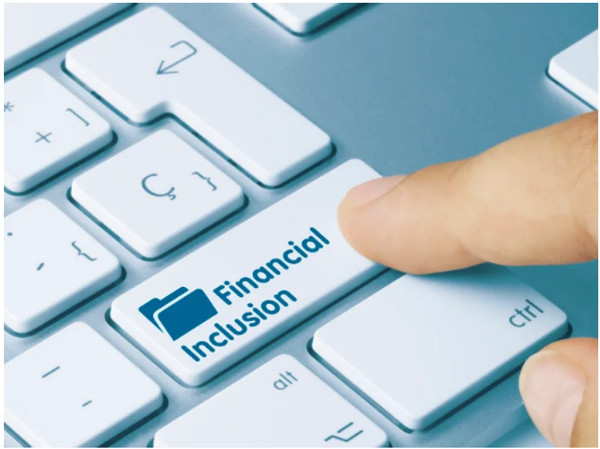Internet economy refers to trends across different sectors like e-commerce, online media, transport and food, online travel, digital financial services, health tech, edtech, among others. Gig economy, however, is just one of several activities happening within the internet economy pertaining mostly to labor that involves temporary and more flexible jobs. They are done by people engaged as short-term, independent contractors like personal shoppers, food delivery drivers, courier drivers, to name a few.
Reports showed pandemic restrictions caused massive unemployment in 2020 wiping out 1.7 million wage and salary jobs in the 12 months to January 2021, resulting in a 15-year high of 10.3% unemployment rate or a total of 4.5 million jobless Filipinos. The crisis, however, accelerated the growth rate of Filipinos venturing into remote work and freelancing which led to the sudden rise of the Philippine gig and internet economies.
Strict quarantine measures created a domino effect of developments like increase in internet usage and patronage of various digital platforms. Mandated lockdowns forced people to work, study, and eat their favorite foods from restaurants and fastfood chains at home, all made possible with the existence of digital platforms such as online shopping sites Lazada and Shopee, and delivery services providers Food Panda, Lalamove, Grab, Angkas and the like.
Fast Growth Rates
Two separate reports on internet and gig economies highlighted the Philippines as the fastest growing in the region and the world. A report by Google, Temasek, and Bain & Co, cited that e-commerce and food delivery services accelerated the fast growth of overall internet economy in the Philippines in terms of gross merchandise value (GMV) projected to likely reach $40 billion in value by 2025.
The Philippines’ GMV is estimated to reach $17 billion this year, an increase of 93% from a year ago, due to government initiatives, mass digital adoption, and double-digit growth in sectors such as food delivery services. The Philippines also added 12 million new digital consumers since the pandemic started in March 2020.
As for the Philippines' digital gig economy, the report by US-based payment platform Payoneer, dubbed: "Freelancing in 2020: An Abundance of Opportunities", showed the Philippine freelancing industry grew the fastest globally since the country's year-on-year freelance revenue growth on the first half of 2020 tripled at 208% outranking India (160%), Japan (87%), Australia (86%), and Hong Kong (79%).
E-commerce, Delivery Platforms Boom
The Philippines' top online shopping markets or E-commerce sites Lazada and Shopee, including quick-commerce (Q-commerce) delivery platform foodpanda, all improved their business performances amid the crippling pandemic regulations.
Lazada Philippines COO Carlos Barrera said both the company's sales and orders increased 2.5 times at present compared to pre-pandemic levels, adding that e-payments adoption also surged with digital payments up three to four times during the same period. Lazada's number of sellers also increased more than three times, or a total of over 120,000 active sellers on the platform.
Shopee Philippines meanwhile, was ranked number one most visited e-commerce and shopping website last October followed by Lazada and Amazon. The digital platform recently earned a new record of selling over two billion items in a single day, and resulted in a 5-time increase in the number of shoppers from rural and smaller towns.
Similarly, Foodpanda benefited well with the lockdowns taking 70% market share among food delivery mobile apps in the Philippines after demand surged in 2020. The company claimed its user base grew by eight times from the figure in February last year even as its restaurant partners increased by five times and its order count went up by 12 times.
Transition from E-hailing to Delivery Service Drivers
The government's restrictions on physical mobility and dine-in services displaced masses of drivers in the public transportation sector but this later led to a great transition of E-hailing drivers into delivery services drivers.
The Philippines' top ride-sharing and ride-hailing app platforms Grab and Angkas both exerted efforts in transitioning their transport driver partners to delivery fleets by making them members of their food delivery platforms GrabFood and Angkas Food.
However, delivery service firm Lalamove stopped its food delivery operations Lalafood in February last year as it decided to redirect its focus entirely on its “core” delivery business.
Future of Philippine Gig, Internet Economies
Like in other countries, the Philippines is facing challenges of possible regulations that could make or break the local gig economy. Besides providing a framework for skills development and protection laws from labor abuse and exploitation, financial inclusion remains a crucial need among gig workers who are mostly unbanked or underbanked.
Here at Smile API, we provide information infrastructure designed to bring wider financial inclusion by interconnecting data from businesses, workers, banks and fintech firms via our API or Application Programming Interface which is, we believe, the first of its kind in the Asia Pacific (APAC) Region. The latest innovation is expected to open up new opportunities for financial inclusion among gig workers and freelancers by means of leveraging on their temporary or "side hustle" or "sideline" income data.
Projections from the recent Google, Temasek, and Bain & Co report, expect that fintech will grow exponentially as digital financial services, especially payments and lending, are experiencing healthy growth.
At Smile API we provide a digital platform that sets the stage for Open Finance, which is a more inclusive model than Open Banking. Compared to open banking, open finance solves the problem of accessing primary employment data instead of bank data, bridging the gaps in the gaining of financial products and services by the unbanked, like freelancers and gig workers.



